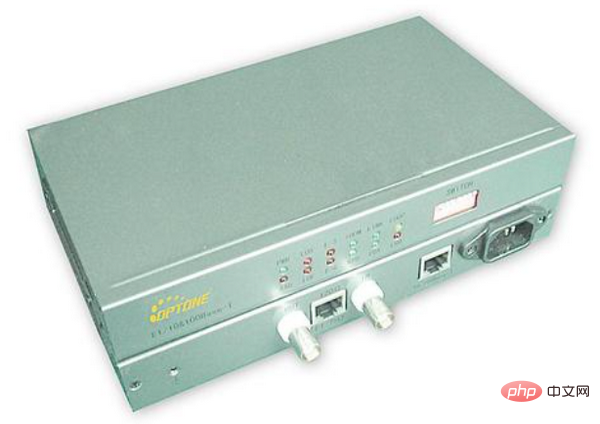Home >Common Problem >What are the transmission equipment?
Transmission equipment includes: 1. Hub, whose function is to regenerate, shape and amplify the received signal to expand the transmission distance of the network and at the same time concentrate all nodes on the node centered on it; 2. Switch , is a network device used for electrical (optical) signal forwarding, which can provide an exclusive electrical signal path for any two network nodes connected to the switch; 3. Network bridge is a two-port Layer 2 network device; 4. A router is a hardware device that connects two or more networks; 5. A repeater is a device that extends the distance of network transmission by retransmitting or forwarding data signals.

The operating environment of this tutorial: Windows 7 system, Dell G3 computer.
Transmission equipment is the communication line connecting switches. Commonly used transmission media include overhead open wires, cables, optical cables and radio waves.
The important function of transmission equipment is to extend the transmission distance and realize long-distance communication. In order to improve transmission efficiency, multiplexing is another important function of transmission equipment. Multiplexing technologies include frequency division multiplexing, time division multiplexing, wavelength division multiplexing and code division multiplexing.
The transmission systems currently used include PCM quasi-synchronous digital series (Plesiochronous Digital Hierarchv, PDH), synchronous digital series (Synchronous Digital Hierarchy, SDH), etc.
What are the commonly used transmission devices
1. Hub
The main function of the hub is The received signal is regenerated, shaped and amplified to expand the transmission distance of the network and at the same time concentrate all nodes on the node centered on it. It works on the first layer of the OSI (Open Systems Interconnection Reference Model) reference model, which is the "physical layer".

2. Switch
Switch means "switch" and is a type of electrical (optical) signal forwarding network equipment. It can provide an exclusive electrical signal path for any two network nodes connected to the switch. The most common switch is an Ethernet switch. Other common ones include telephone voice switches, fiber optic switches, etc.

3. Network Bridge
Bridge is an early two-port Layer 2 network device. The two ports of the bridge each have an independent switching channel instead of sharing a backplane bus, which can isolate conflict domains. Bridges have better performance than hubs. Each port on the hub shares the same backplane bus. Later, bridges were replaced by switches that had more ports and could also isolate conflict domains.

4. Router
Router is a hardware device that connects two or more networks. The role of a gateway is a dedicated, intelligent network device that reads the address in each data packet and then decides how to transmit it. In network communications, routers have the function of determining network addresses and selecting IP paths. They can build flexible link systems in multiple network environments and link various subnets through different data grouping and media access methods.

5. Repeater
The repeater (RP repeater) is a connection device that works on the physical layer. It is suitable for the interconnection of two identical networks. Its main function is to expand the network transmission distance by retransmitting or forwarding data signals. A repeater is a network device that regenerates and restores signals: a physical layer device of the OSI model.

For more related knowledge, please visit the FAQ column!
The above is the detailed content of What are the transmission equipment?. For more information, please follow other related articles on the PHP Chinese website!